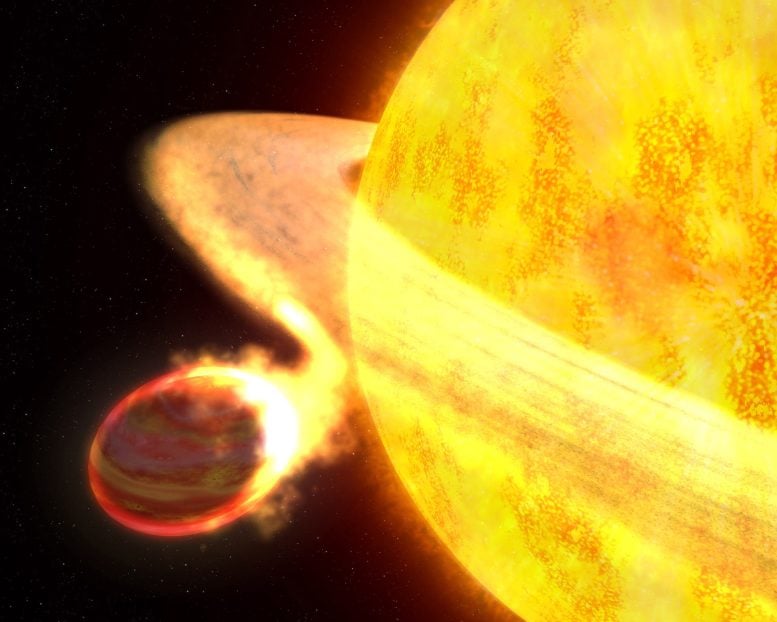
A study from Durham University reveals that stellar magnetic fields could be key to understanding the orbital decay of ‘hot Jupiter’ exoplanets, providing new insights into their eventual consumption by their parent stars.
A recent study led by researchers at Durham University has discovered a novel mechanism that may solve the long-standing mystery of decaying planetary orbits around stars similar to our Sun. Published in The Astrophysical Journal Letters, the study suggests that stellar magnetic fields are crucial in dissipating the gravitational tides responsible for the orbital decay of ‘hot Jupiter’ exoplanets.
Hot Jupiters are massive, gaseous planets similar to Jupiter that orbit extraordinarily close to their parent stars, taking only a few days to complete one orbit. This close proximity subjects both the planet and star to powerful gravitational tides that transfer orbital energy, causing the planets to slowly spiral inwards over billions of years until they are eventually consumed.
Challenges in Current Theories
Current tidal theories cannot fully explain the observation of orbital decay in the system WASP-12b, a hot Jupiter whose decaying orbit will send it into its host star WASP-12 in a few million years. According to the research team, which included scientists from the University of Leeds and Northwestern University alongside Durham, strong magnetic fields within certain sun-like stars can dissipate the gravitational tides from hot Jupiter planets very efficiently.
The tides create inward waves inside the stars. When these waves encounter the magnetic fields, they get converted into different types of magnetic waves that travel outwards and eventually disappear.
Reflecting on the research findings, lead author of the study Dr. Craig Duguid of Durham University, said: “This new mechanism has wide-reaching implications for the survival of short-period planets and particularly hot Jupiters. It opens a new avenue of tidal research and will help guide observational astronomers in finding promising targets to observe orbital decay. It is also quite exciting that this new mechanism could be observationally tested within our lifetime.”
The study findings suggest certain nearby stars may be good targets to search for additional hot Jupiter planets on decaying orbits. If found, they could provide more evidence about how magnetic fields impact the tides from these alien worlds. The research could also reveal where the dissipated tidal energy goes within the star’s interior.
Reference: “An Efficient Tidal Dissipation Mechanism via Stellar Magnetic Fields” by Craig D. Duguid, Nils B. de Vries, Daniel Lecoanet and Adrian J. Barker, 29 April 2024, The Astrophysical Journal Letters.
DOI: 10.3847/2041-8213/ad3c40
1 Comment
Good, I can rest easy now.